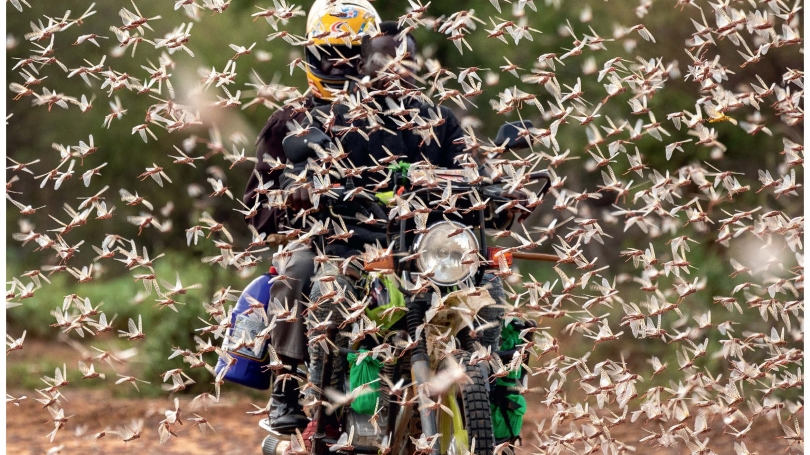
- About
- Undergraduate
- Graduate
- Foreign Study
- Research
- News & Events
- People
Back to Top Nav
Back to Top Nav
Back to Top Nav
Back to Top Nav
Back to Top Nav
Prof. Nathaniel Dominy and graduate student Luke Fannin's article on locusts featured on the cover of People and Nature.
Desert locusts Schistocerca gregaria are threatening the food security of millions of people and devastating economies in eastern Africa and northern India and the ongoing outbreak is the largest in seven decades. These events give us cause to reflect on the natural history of locusts, our fraught relationship with them, and how they are represented in American popular culture and others. Symbolic representations span millennia and most have roots in the natural life cycle of locusts—they transform, they swarm, they devastate specific food crops. There is strong tendency to exaggerate the body size of locusts and the effectiveness of control efforts.
Expressions of human futility are rare except in the form of ironic humour. We suggest that humans indulge in hyperbole and humour to normalize and inure ourselves to the psychologically unbearable, and that this tendency is a precondition for the techno-optimism that drives anti-locust technologies. There is no substitute for effective monitoring and management programs, but the importance of new and emerging anti-locust technologies is expected to increase with projections of increased cyclone activity in the northern Indian Ocean. Read the full article here.